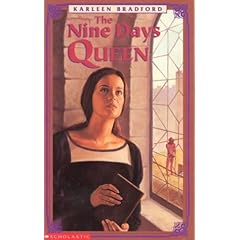We spent a lot of time today in museology class discussing children's museums. These museums have been around for a hundred years, and are popping up all over the United States (and Canada). Children's museums are categorized by their high level of interactivity, and exhibits that appeal strictly to children. They are like science centres (which I would argue are pretty much children's museums in everything but name - a discovery I made a few summers ago at the Ontario Science Centre) where children are encouraged to run wild, while being stimulated by lights, computers, sound, buttons, cranks etc.
Unfortunately, our discussion relied on a strict dichotomy between children's museums and "traditional" museums, one for kids and the other strictly for adults. It seemed that these traditional "no-touch" museums could not possibly hold any interest for children. This seemed a bit silly to me, since I was an avid museum visitor from a young age and have never stepped foot inside a Children's Museum.
I feel that the vast majority of museums appeal to both adults and kids. They have to - these non-profit institutions could not survive without appealing to families, or anyone under the age of 40. We have discussed in different classes the level of education most museums must assume their audience holds. In the interest of having a wide audience, and not alienating those who may not have university degrees (for instance), museums generally write text panels anywhere from a grade 3-9 level. Besides, as a child in a museum I would have most likely been accompanied by an adult, who could explain a concept I didn't understand. Topics in history museums have always appealed to children, classics such as mummies, dinosaurs, and large machines.
We also discussed in class the nostalgic feeling people have for their local museums, and the sadness when renovations erase this public space people have grown to love. Surely many people began to feel a connection to their museums when they were children?
I definitely did. I have fond memories of visiting various Ottawa museums as a child with my sister and father. The Museum of Nature held dinosaurs, gems and stuffed animals ( I did enjoy these as a child...). The Aviation Museum had large planes - always fun. The Museum of Civilization was always impressive, with its collection of Native artifacts and models of early Canadian life. I visited the National Gallery quite a few times, but usually enjoyed the architecture more than the art. The Museum of Science and Tech was a favourite, though this falls more closely in the category of science centre, since I enjoyed looking at the chicks, climbing in the trains, seeing the model of the Titanic, walking through the Crazy Kitchen and watching the video of space ships blowing up.
I liked museum manager Mary Warner's article, "The Rumble of Little Feet" (Museum News, Sept/Oct 2006), because it argued that children could learn, and, gasp!, have fun in a traditional museum. As she says, children's brains have not changed to the extent we think in the past few generations: they are still curious about the world around them. They don't need overstimulation to get a valuable learning experience.
3 days ago



